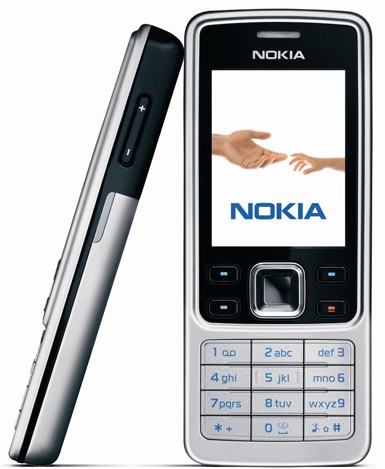 Everyone with an iPhone will by now have seen and “played” them: the first generation of multi-player games where most of the computing is done in the cloud, relieving the handset from such labourious tasks. This, according to new report, will soon (well, by 2014) be the norm and will in fact erase downloadable apps (games and other) as we know them today.
Everyone with an iPhone will by now have seen and “played” them: the first generation of multi-player games where most of the computing is done in the cloud, relieving the handset from such labourious tasks. This, according to new report, will soon (well, by 2014) be the norm and will in fact erase downloadable apps (games and other) as we know them today.
The huge advantage of this approach is that it would largely do away with the fragmentation nightmare of the handset market: multiple operating systems, a plethora of screen sizes, all sorts of “interesting” middle-ware solution imposed by either carriers (Sprint anyone?) or OEM to “tweak” an OS to their specs, with the sole result of making things even more cumbersome for developers. It is one reason why the Apple iPhone ecosystem thrives as it does: one OS, one model, one distribution channel, worldwide deployment. If the heavy-lifting is done in the cloud rather than on the handset, one can – presumably – do away with less complex front-ends reducing the work necessary to port the app to various handsets (and, no, please do not choose iMob as the benchmark!). Coding for the cloud would resemble web development rather than today’s mass market application development with armies of post-production and QA engineers filling offices (and overall development costs).
Another, easily overlooked, advantage is battery life: the more (and more complex) processes are computed on the phone hardware, the more the device will consume of the precious and scarce juice; battery life is better with cloud computing!
The obvious downside of mobile cloud computing is a blue sky: no cloud, no app. In posh tech lingo: intermittent network availability, which is to say that the app won’t work if you have no coverage (so no displacing downloadable apps in Oklahoma or on the Scottish isles then…). The aforementioned report suggests HTML 5 and its more sophisticated caching options as the solutions but I am fairly skeptical in that respect: you will not bring about the “unprecedented” sophistication with a little bit of cached data.
Anyway, the more likely scenario is an abundance of network availability by 2014 anyway: by then, large parts of our computing will be done over the air and LTE (and further evolved) networks will surely rule good parts of the world.
 So, will it work? The report points out iPhone apps for the likes of Amazon, eBay, etc and, yes, for such apps I am sure it will work: they basically extend a front-end of a web service to a mobile device. The “app” is basically a client that facilitates input and serves as a crutch for the smaller screen where it is necessary to optimise the available data so as not to overburden the little available space with non-core information.
So, will it work? The report points out iPhone apps for the likes of Amazon, eBay, etc and, yes, for such apps I am sure it will work: they basically extend a front-end of a web service to a mobile device. The “app” is basically a client that facilitates input and serves as a crutch for the smaller screen where it is necessary to optimise the available data so as not to overburden the little available space with non-core information.
Will it work for more complex apps, in particular games? It will depend. On what? On the type of game of course! How many online racing games do you know? I mean really good ones. None? Ah… Why is that? Because not even the abundance of bandwidth and computing power available today gets to a game experience even close to the 50+ frames per second that the top iPhone racing games can do today (check out Firemint’s Real Racing!). The experience on next-gen consoles is even more astonishing. Need for Speed: Under Cover on XBox 360 or PS3? Woah! All these games require very serious hardware acceleration to convert the high-end graphics into smooth, fast, flowing action. And broadband networks aren’t good enough for that. Period.
For other games, turn-based card games, board games, the Sims, or indeed full-blown MMO, this is another story. These games may require a lot of data but the speed is not as important for good gameplay. So for this group (which is arguably the larger one), cloud computing will probably be the way forward. The opportunity exists in particular (and will be largely sufficient) for all “serious” business applications: these feed for the most part off server-side data sets already and a light mobile client (or browser?) is all they need to provide serious productivity boosts to the corporate world.
So will these run in a (mobile-optimised) browser or via (lighter) downloadable front-end apps? Due to the constraints of the small screen, I believe it will remain very beneficial to the UI and playability to have a specific front-end (and core graphics and processes) on your handset because it will optimise the user experience on a mobile device. To keep this bit as generic and light will be key. Otherwise, it would be porting hell all over again.
But we’ll get there! Just watch out!
 I have just been killing time and played a game on my iPhone. A free one. One with little ads at the bottom, mainly asking you to download all sorts of apps and games. Powered by Admob. And what do I get? An ad in Dutch asking me to download Skype. Then one in French offering me a free game. To make it clear: I am in the UK and had been playing on a UK-sourced iPhone with an O2 UK SIM card. I am a foreigner in this country but I am neither Dutch nor French; in fact, neither the Dutch nor the French usually like to be thrown into one pot with Germans… ;-).
I have just been killing time and played a game on my iPhone. A free one. One with little ads at the bottom, mainly asking you to download all sorts of apps and games. Powered by Admob. And what do I get? An ad in Dutch asking me to download Skype. Then one in French offering me a free game. To make it clear: I am in the UK and had been playing on a UK-sourced iPhone with an O2 UK SIM card. I am a foreigner in this country but I am neither Dutch nor French; in fact, neither the Dutch nor the French usually like to be thrown into one pot with Germans… ;-). Does anyone really think that this will work? And, moreover: what are ad “impressions” really worth when they only quite literally display, well, random stuff rather than ads people can also understand (for those unaware: being able to say “merci” with an even remotely foreign-sounding accent is considered a major linguistic accomplishment in this country)? In this context, AdMob’s recently reported numbers might be queried, I guess…
Does anyone really think that this will work? And, moreover: what are ad “impressions” really worth when they only quite literally display, well, random stuff rather than ads people can also understand (for those unaware: being able to say “merci” with an even remotely foreign-sounding accent is considered a major linguistic accomplishment in this country)? In this context, AdMob’s recently reported numbers might be queried, I guess…
 Everyone with an iPhone will by now have seen and “played” them: the first generation of multi-player games where most of the computing is done in the cloud, relieving the handset from such labourious tasks. This, according to
Everyone with an iPhone will by now have seen and “played” them: the first generation of multi-player games where most of the computing is done in the cloud, relieving the handset from such labourious tasks. This, according to  So, will it work? The report points out iPhone apps for the likes of Amazon, eBay, etc and, yes, for such apps I am sure it will work: they basically extend a front-end of a web service to a mobile device. The “app” is basically a client that facilitates input and serves as a crutch for the smaller screen where it is necessary to optimise the available data so as not to overburden the little available space with non-core information.
So, will it work? The report points out iPhone apps for the likes of Amazon, eBay, etc and, yes, for such apps I am sure it will work: they basically extend a front-end of a web service to a mobile device. The “app” is basically a client that facilitates input and serves as a crutch for the smaller screen where it is necessary to optimise the available data so as not to overburden the little available space with non-core information. Mobile advertising firm
Mobile advertising firm  Here’s a tale of the brave new world of the web, the collaborative, open, participatory one. It starts harmlessly. Vodafone Germany did something new: a new image, a new target group, a new PR format… The formal pointer was the full integration of
Here’s a tale of the brave new world of the web, the collaborative, open, participatory one. It starts harmlessly. Vodafone Germany did something new: a new image, a new target group, a new PR format… The formal pointer was the full integration of  Now, I am rarely (ever?) writing about personnel changes but this one probably deserves a note: Greg Ballard,
Now, I am rarely (ever?) writing about personnel changes but this one probably deserves a note: Greg Ballard,  Here’s our monthly update on the best-selling phones as derived from accessory sales by Swedish company
Here’s our monthly update on the best-selling phones as derived from accessory sales by Swedish company  AR stands for Augmented Reality and it is one of the dreams of game developers: merge the virtual and real worlds in a game and explore new horizons. This has been a pretty futuristic feature until recently: shown off at trade shows but never really seeing the (commercial) limelight. And even in the brave new world of the iPhone, it doesn’t fly – yet.
AR stands for Augmented Reality and it is one of the dreams of game developers: merge the virtual and real worlds in a game and explore new horizons. This has been a pretty futuristic feature until recently: shown off at trade shows but never really seeing the (commercial) limelight. And even in the brave new world of the iPhone, it doesn’t fly – yet.